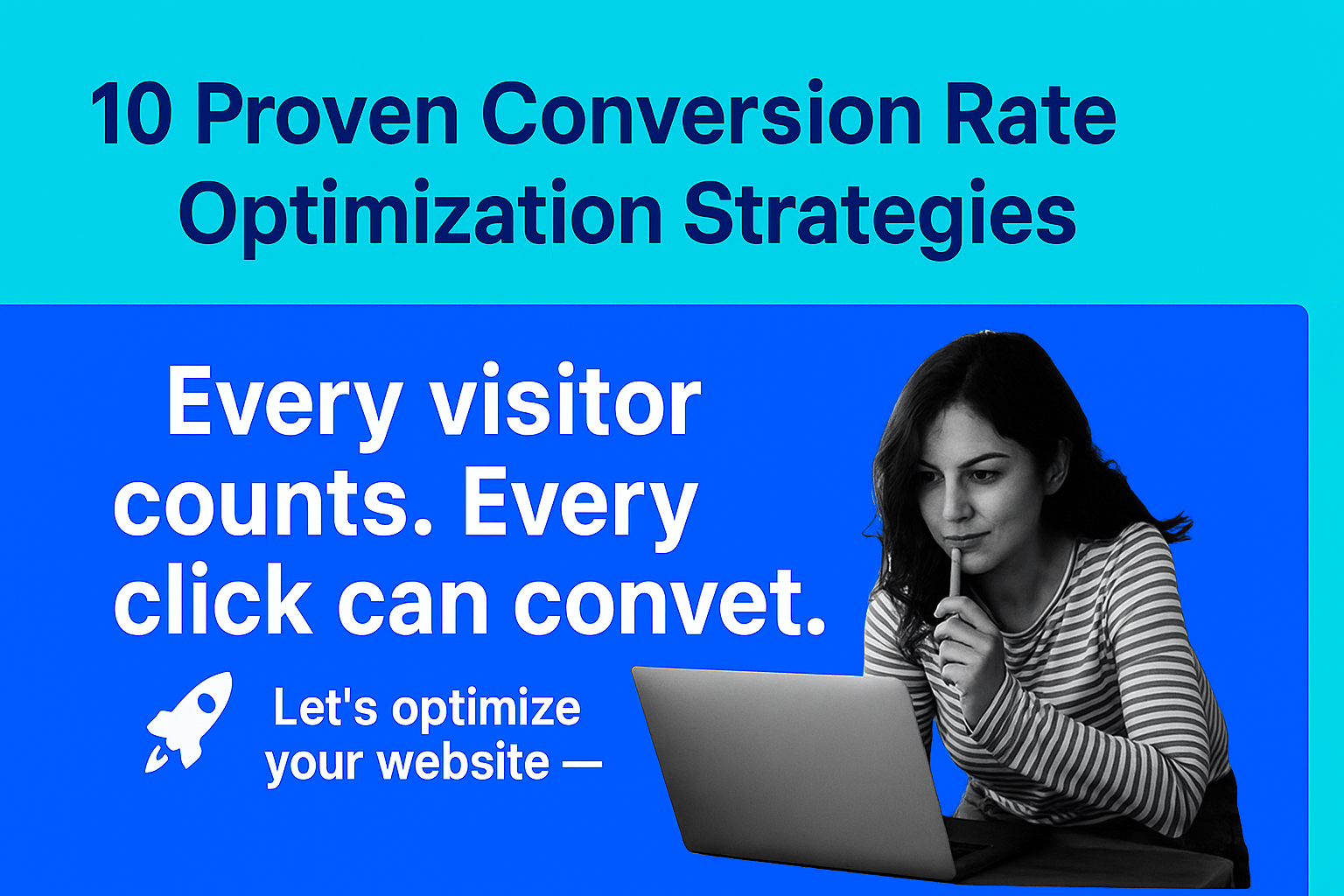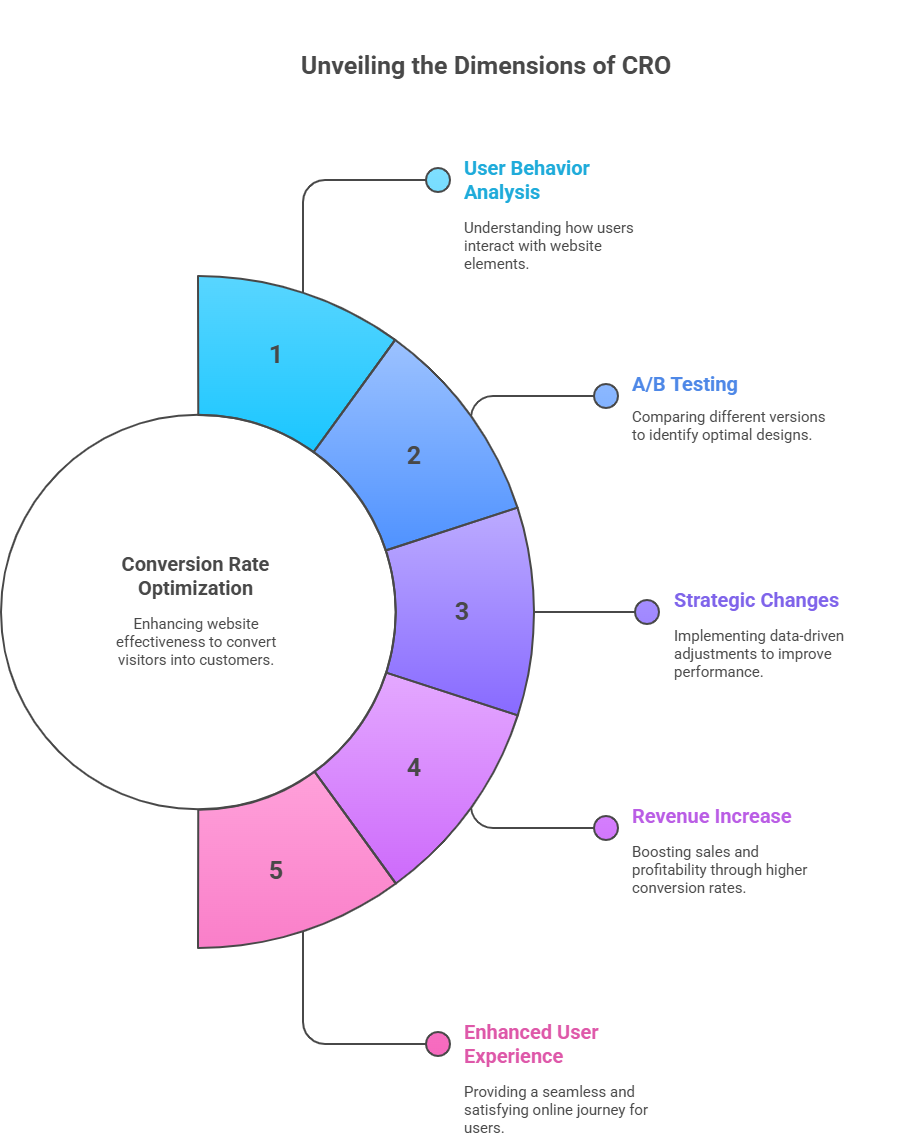Written by: Manisha Sharma
10 Proven Conversion Rate Optimization Strategies
A few months back, your website looked like it had everything going right. Steady traffic kept coming in, leads stayed consistent, and sales flowed along nicely. But then things shifted a bit over time. The numbers began to slide down. People still showed up as visitors, but way fewer of them hit that Buy Now button or bothered to fill in the contact form.
You went over your ads pretty carefully, looked at all the content again, and even tried out some promotions to shake things up. But none of it really helped solve the issue. That sinking feeling in your gut. It hits every business owner at some point when conversions just drop off without warning.
Here is the real deal though. It does not mean everything is over for good.
In a lot of cases, you only need a handful of clever adjustments to get back on track. Those are the sorts of changes that come from using Conversion Rate Optimization, or CRO as folks call it.

1. Analyze User Behavior and Data
Start with seeing how people really move through your website. Tools like Google Analytics, Hotjar, and Microsoft Clarity help spot the spots where visitors bail out in no time at all.
Examine bounce rates, heatmaps, and complete user sessions up close. This kind of review sets up a strong starting point for handling Conversion Rate Optimization properly.

2. Improve Page Load Speed
Slow loading times on a website can damage your conversion rates quite a bit. Various studies show that even a single second of delay could lower those conversions by around seven percent.
You might improve this situation through steps like compressing images for smaller file sizes. Turn on caching to store data more efficiently. Select hosting services known for their quick performance. In the end, such improvements in speed become a key element in enhancing your overall conversion rate optimization.
3. Optimize for Mobile Devices
More than 60 percent of users check out sites on their mobile devices. If the website does not adapt well to mobile, potential customers end up going elsewhere.
Switch to a responsive design setup. Make button sizes fit better. Keep forms straightforward for those smaller screens. These steps form the core of what drives conversion boosting success.
4. Simplify the Conversion Funnel
If the checkout or signup steps feel too complex, people tend to drop off right away. They do not stick around to complete the process.
Cut back on those extra actions that are not needed. Clear away any elements pulling focus elsewhere. Build a clear path that guides users easily from the beginning all the way to making the purchase.
The core of any solid strategy for boosting conversions comes down to keeping that funnel simple.
5. Strengthen Your Call-to-Actions (CTAs)
CTAs help push users to actually do something. You know, skip those plain old buttons like Submit. Go for text that really drives the point home.
Things like Book Your Free Consultation. Or Get My Offer Now. Pick bold colors for them. Put them right where folks can spot them easily. That one simple shift can make a big difference in your conversion boosting outcomes.
6. Add Trust Signals and Social Proof
People tend to make purchases when they feel a real sense of trust toward the seller. You can help build that by adding in things like customer reviews, testimonials from happy users, detailed case studies, and trust signals such as SSL badges or official certifications. When you focus on creating credibility, it puts visitors at ease, which leads to higher levels of engagement and better conversion rates overall. Trust ends up being one of the strongest elements in conversion rate optimization.
7. Personalize the User Experience
Personalization builds a real connection between users and the site. It lets you show content that shifts depending on their actions. Think about welcoming returning visitors with special offers the moment they show up.
Tailored exchanges help people feel truly valued. This boosts the site’s success at converting casual visits into real engagement. It happens smoothly, without any pushiness.
8. Conduct A/B Testing Regularly
With respect to marketing, A/B testing is essentially the best way to see what’s working and what isn’t. You can test different versions of your landing page, headlines, images, and CTAs to see which combination gets the most clicks, and that’s exactly what A/B testing does, finding that winning combination. Even tiny improvements can have a massive impact, that’s why A/B testing has been considered one of the most effective conversion rate optimization tactics.
9. Retarget Lost Visitors
Once, a visitor to your site didn’t convert your first time. It’s smart to employ retargeting ads
to give them a nudge with your product or service. Merely, a follow-up offer is able to win over those abandoning the conversion process halfway — which is a cool instance of a conversion rate tromp-out by means of action.
10. Monitor and Optimize Continuously
Conversion Growth Strategy is definitely not a single action. You have to keep monitoring your data, checking user feedback, and trying out new ideas. Ongoing development is the way your conversion rate can be still be high in a changing market.
Conclusion
A decrease in conversions is not a failure, but rather a source of information. With the help of these 10 Conversion Rate Optimization strategies
you will be able to figure out the problems, make the user’s experience better, and increase your results steadily.
Don’t forget: Optimization is a continuous voyage — and every adjustment gets you
Take Action Now Start Optimizing for Conversions!
Don’t let low conversion rates hold your business back.
With the right Conversion Rate Optimization strategy, you can turn casual visitors into loyal customers and boost your ROI fast.
Ready to unlock your website’s full potential?
Contact our Conversion Experts today to get a free CRO audit and discover what’s stopping your visitors from converting.



